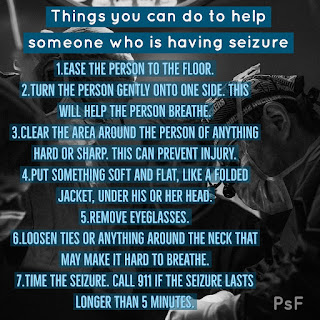How to Manage Seizure
Type of Seizures?
Seizures are classified into two groups.
Seizures are classified into two groups.
Generalized seizures affect both sides of the brain.
*Absence seizures, sometimes called petit mal seizures, can cause rapid blinking or a few seconds of staring into space.
*Absence seizures, sometimes called petit mal seizures, can cause rapid blinking or a few seconds of staring into space.
*Tonic-clonic seizures, also called grand mal seizures, can make a person
-Cry out.
-Lose consciousness.
-Fall to the ground.
-Have muscle jerks or spasms.
-Cry out.
-Lose consciousness.
-Fall to the ground.
-Have muscle jerks or spasms.
Focal seizures are located in just one area of the brain. These seizures are also called partial seizures.
*Simple focal seizures affect a small part of the brain. These seizures can cause twitching or a change in sensation, such as a strange taste or smell.
*Complex focal seizures can make a person with epilepsy confused or dazed. The person will be unable to respond to questions or direction for up to a few minutes.
*Secondary generalized seizures begin in one part of the brain, but then spread to both sides of the brain. In other words, the person first has a focal seizure, followed by a generalized seizure.
What you shouldn't do?
Do not hold the person down or try to stop his or her movements.
Do not put anything in the person’s mouth. This can injure teeth or the jaw. A person having a seizure cannot swallow his or her tongue.
Do not try to give mouth-to-mouth breaths (like CPR). People usually start breathing again on their own after a seizure.
Do not offer the person water or food until he or she is fully alert.



Comments
Post a Comment